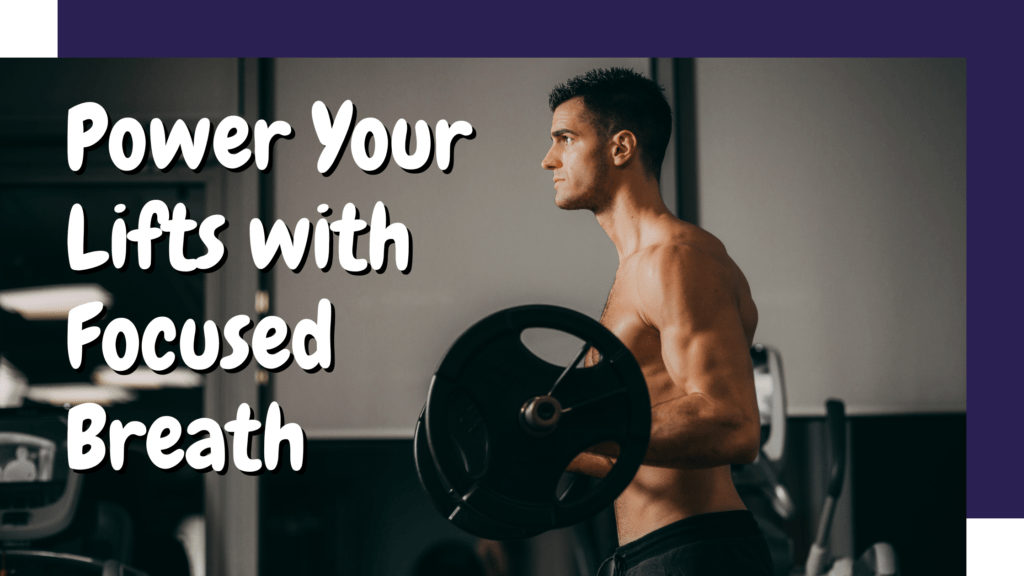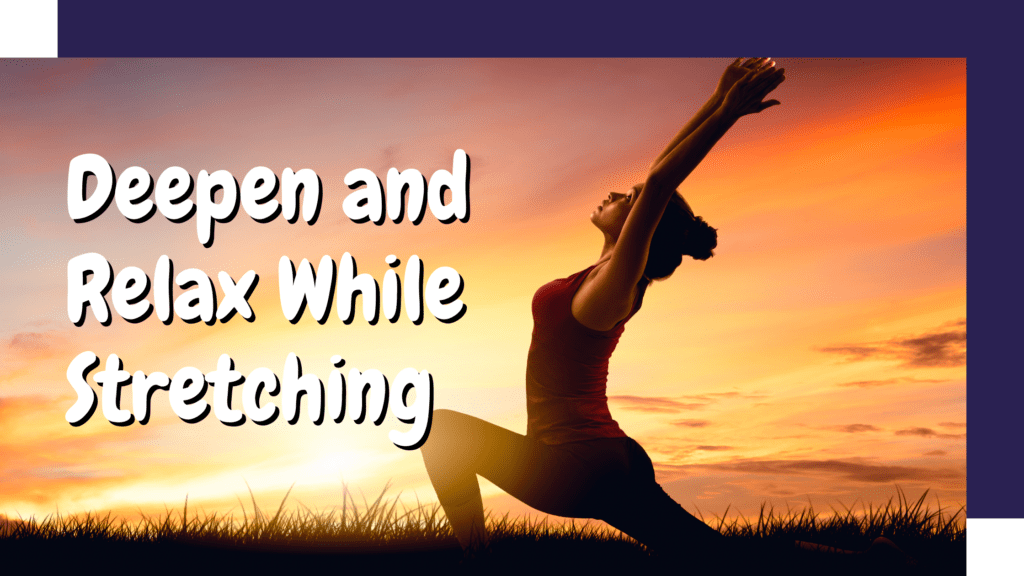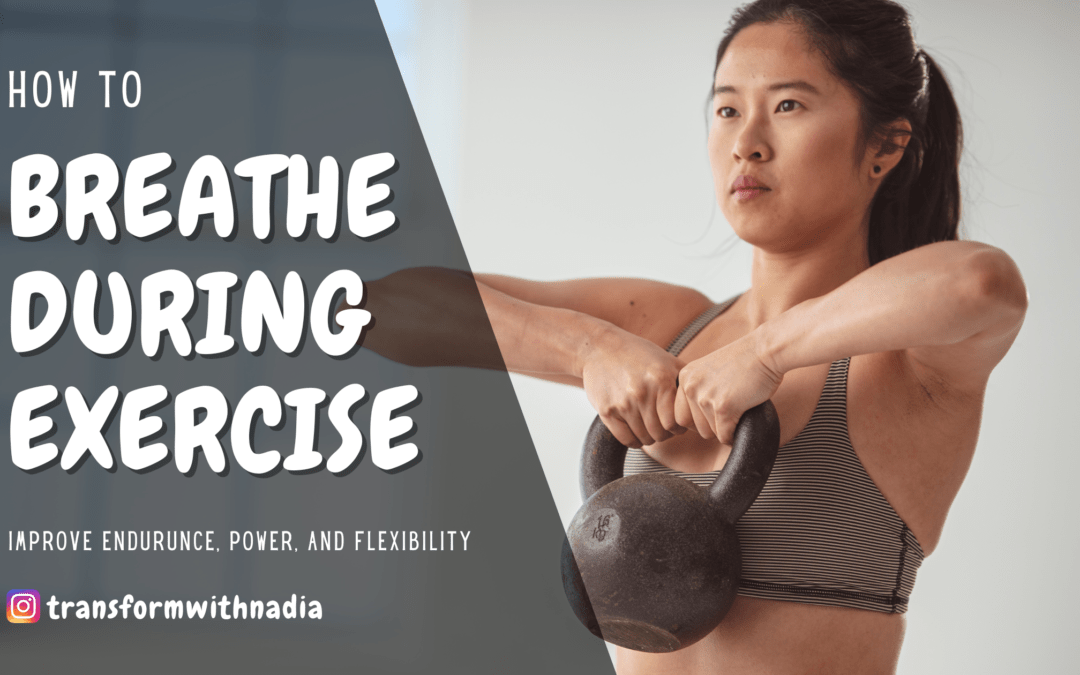Do you find yourself getting breathless during workouts? Or perhaps you lose steam while you’re lifting or doing cardio. It may be time to give breathwork a try. Most people associate breathwork (aka pranayama) with meditation or yoga, but it can be used in a variety of ways to enhance your daily workouts. In this blog, I’m sharing what the benefits are of using breathwork during 3 different types of workouts and how to breathe during exercise so that you can enhance your training.
Breathwork Can Increase Your Endurance

Your body is smart. It’s natural response to a shift in your activity level (i.e. going from standing still to walking or running) is to increase your heart rate. This way, your blood pumps through your body, providing much needed oxygen to your muscles. As your heart beats faster, your breath quickens so that you can pull in more oxygen to circulate. Pretty cool, right?
The problem occurs when your breathing is too fast. This can occur when you are deconditioned (read: out of shape), have a lung or heart condition, or if your muscles are fatigued. If your ultimate goal is to increase your endurance, you can benefit from adopting a breathwork routine that increases your lung capacity and slows down your heart rate for sustained activity.
How to Breathe During Cardio Activities
To slow your breathing during cardio training (such as long runs or agility work), practice exhaling longer than you inhale. In other words, try to breathe out for a second or two longer than you breathe in. It may be helpful to count.
- Inhale: 1, 2, 3,4
- Exhale: 1, 2, 3, 4, 5
The specific length may vary depending on your lung capacity and the activity you’re doing. With cardio in particular, this can be difficult, because our natural tendency is to breathe in and out faster. But don’t worry. With practice, it will get easier to learn how to breathe during exercise.
Focused Breathing Can Power Resistance Work

If you’ve been following me for a while, you know my opinion on resistance training. I believe that it’s an essential aspect of a well-rounded routine maintaining your strength and keeping your body healthy, especially for those who are 30+. One of the most common errors I see while watching beginner clients execute strength moves is the tendency to hold their breath while completing a set. Truth be told, it’s an understandable response.
During many exercises, not only are your major muscle groups engaged, but you’re also bracing a number of core muscles. When tightening these muscles, a novice will naturally tighten their airways. This is quite similar to a training technique called the Vasalva Maneuver, the intention of which is to protect your spine through core engagement. Researchers and doctors warn that using VM can have negative health consequences. Although the research results of this vary, the real life truth remains that I’ve seen more than a few clients nearly pass out during workouts because they held their breath while lifting.
How to Breathe While You Lift
A good rule of thumb during strength training is to breathe in during the “easier” portion of the move and to breathe out during the “harder” portion. Here are a few examples:
- Fire Hydrant: breathe out when you lift your knee to the side, breathe out when you return your knee to the ground
- Chest Press: Breathe in when your elbows touch the ground, breathe out when you press your arms up
- Crunch: breathe in with your shoulders on the floor, breathe out when you crunch
There are exceptions to this rule, but this guideline will serve you well for most exercises. When you breathe during exercise, particularly during strength training, slow down the moves. When my clients do this, they often share that they feel the isolated muscles they are working more intensely.
Pranayama Can Lead to Better Focus and Deeper Relaxation

The purpose of breathwork or pranayama during a yoga flow or stretching is to synchronize your breath with the movements of your physical body (referred to as vinyasa). This has an effect that is much like meditation, training you to remain focused on the present moment by quieting your mind and releasing anxiety and unnecessary tension. This is one of the reasons why, even after a challenging yoga class, most students report feeling completely relaxed.
Contrary to the popular habit of pushing or pulling yourself deep into stretches or yoga poses, using breathwork encourages a habit of softening instead. In practice, it reduces the chances of getting injured and can aid in calming the stress response of your sympathetic nervous system, which often increases tension due to perceived (but not always real) threats. Although traditional stretching doesn’t use the same method, the type of breathwork used in yoga can be applied to your normal stretch/cooldown routine for similar results.
How to Breathe While Stretching and Practicing Yoga
I think you’ll find this funny (at least I do). If you flip the way you practice breathwork or pranayama during resistance training, you’ll have the standard protocol for yoga and stretching (the exception is abdominal work, which is exactly the same). Namely, you breathe in during the upward or expansive portion of a move and breathe out during the descending or “drawing in” motion. For Example:
- In a forward fold: inhale to lift up halfway, exhale to fold forward
- Down Dog to low lunge: Inhale to lift your leg up, exhale to step your foot between your hands
- Warrior 2 to Side Angle: Inhale to reach your hands over your feet, exhale to tip sideways into side angle
Here’s a quick yoga flow demo. You may not be able to hear me breathing, but if you watch closely, you can see my ribcage expand during expanding and lifting movements and contracting during lowering movements.
How to Breathe During Exercise: Practice!
If you would like to increase your endurance, have more power during your lifts, and release tension to dive deeper into your stretches, you will likely benefit from adopting a habit of using breathwork during exercise. All you have to do is apply the corresponding method to your next cardio training, strength session, or yoga practice. Although it may take some time to fully change your breathing habits by learning how to breathe during exercise, the methods themselves are pretty easy to practice. So give it a try! I have full faith in you.
Good luck!
Nadia

